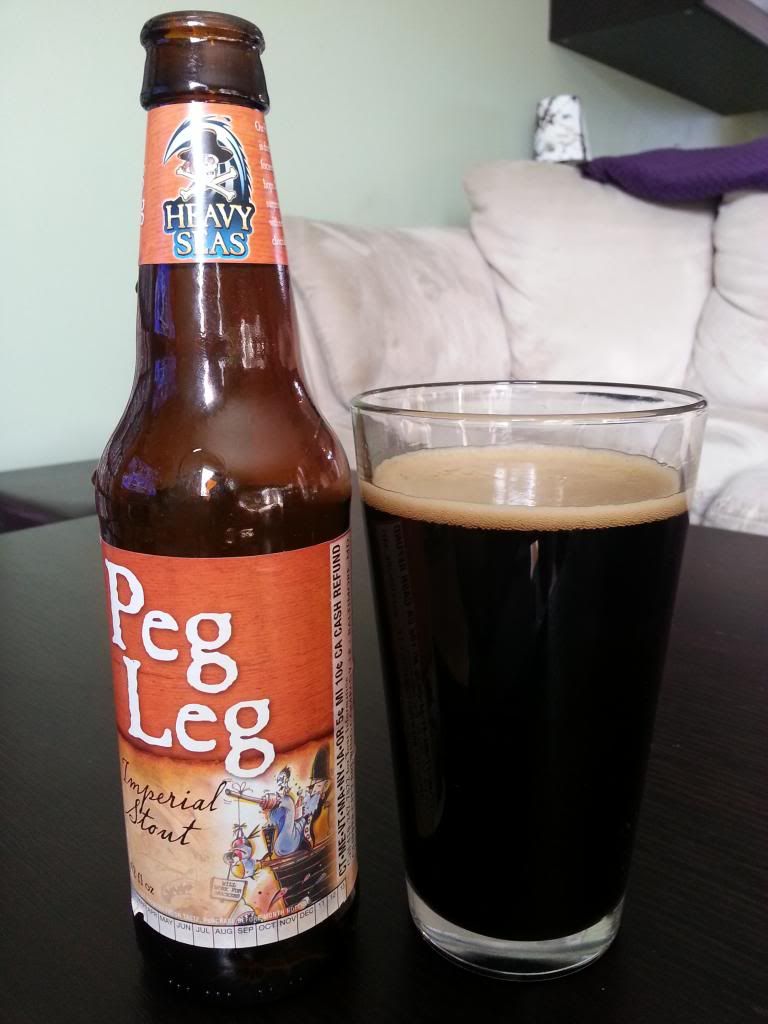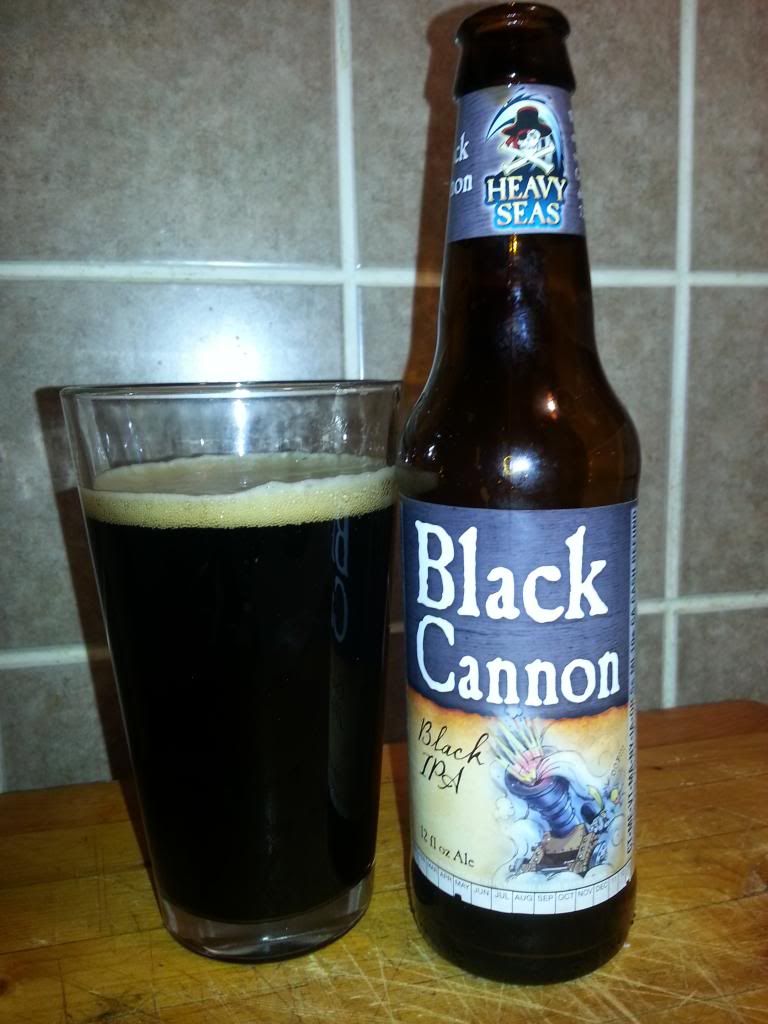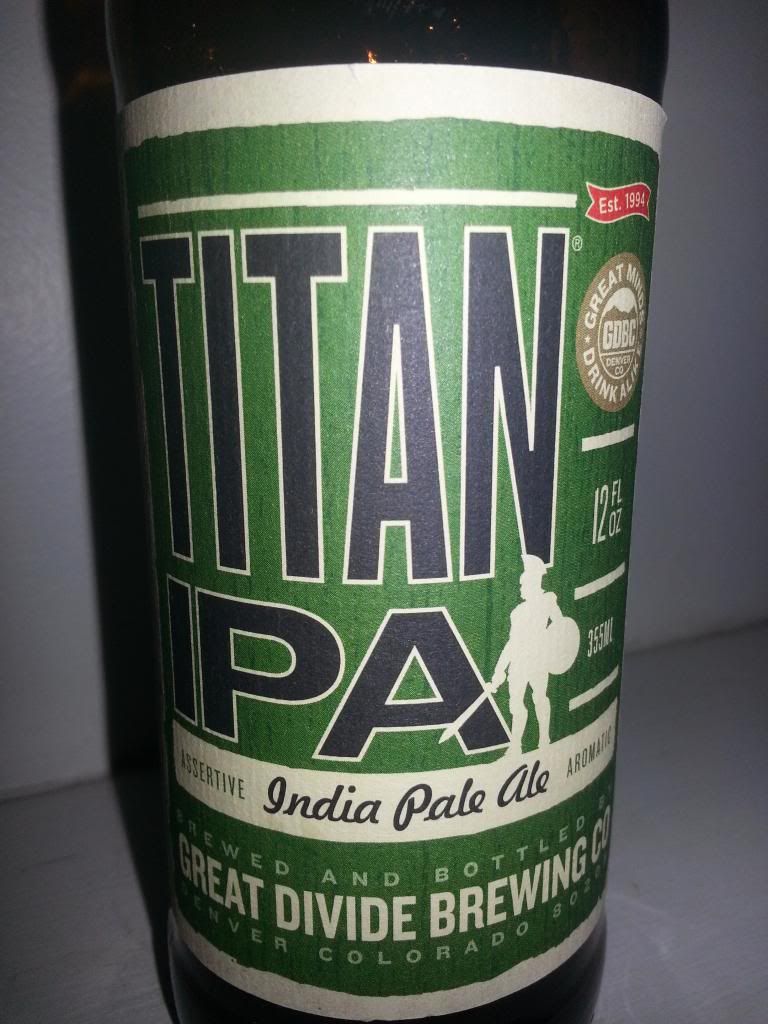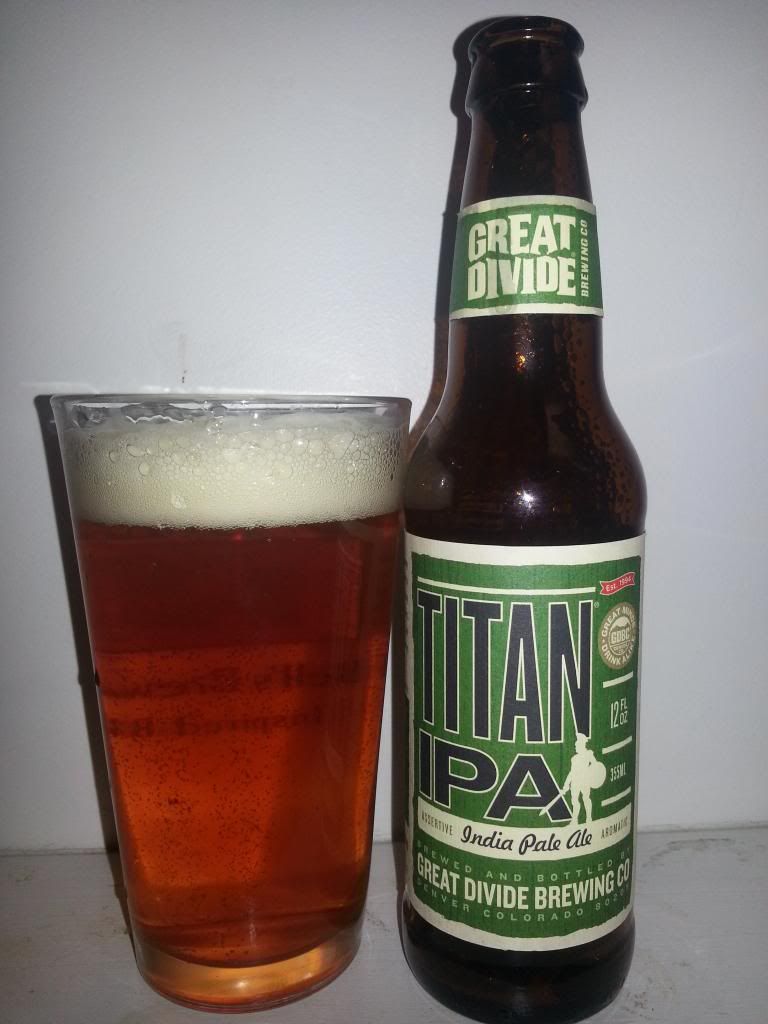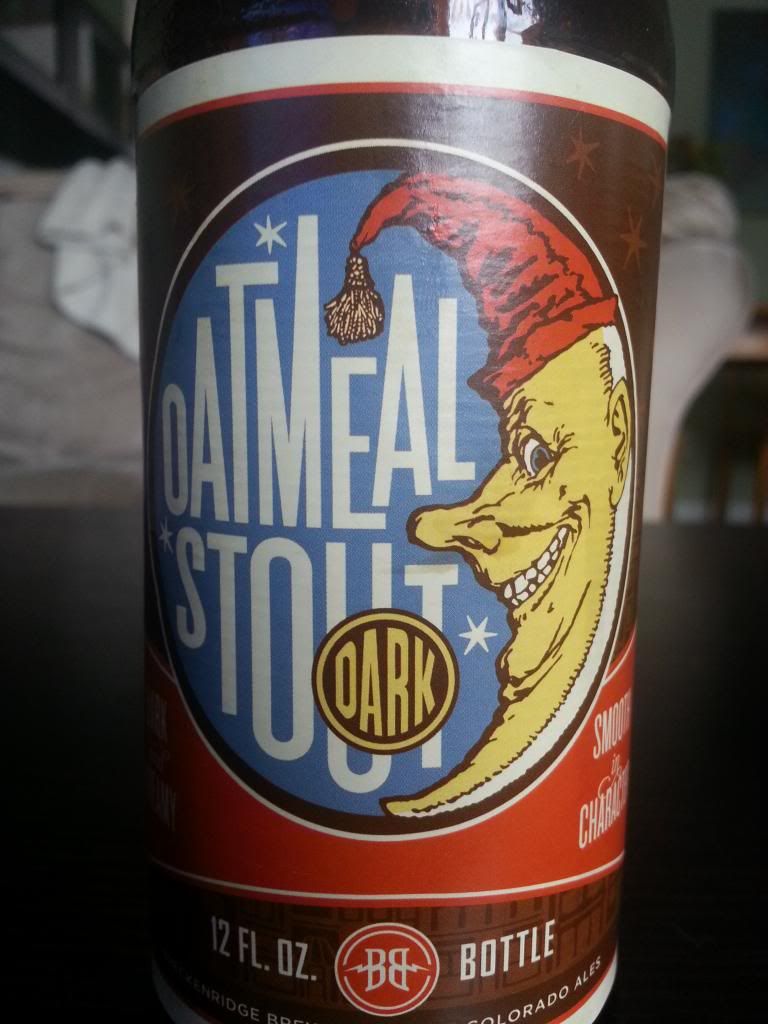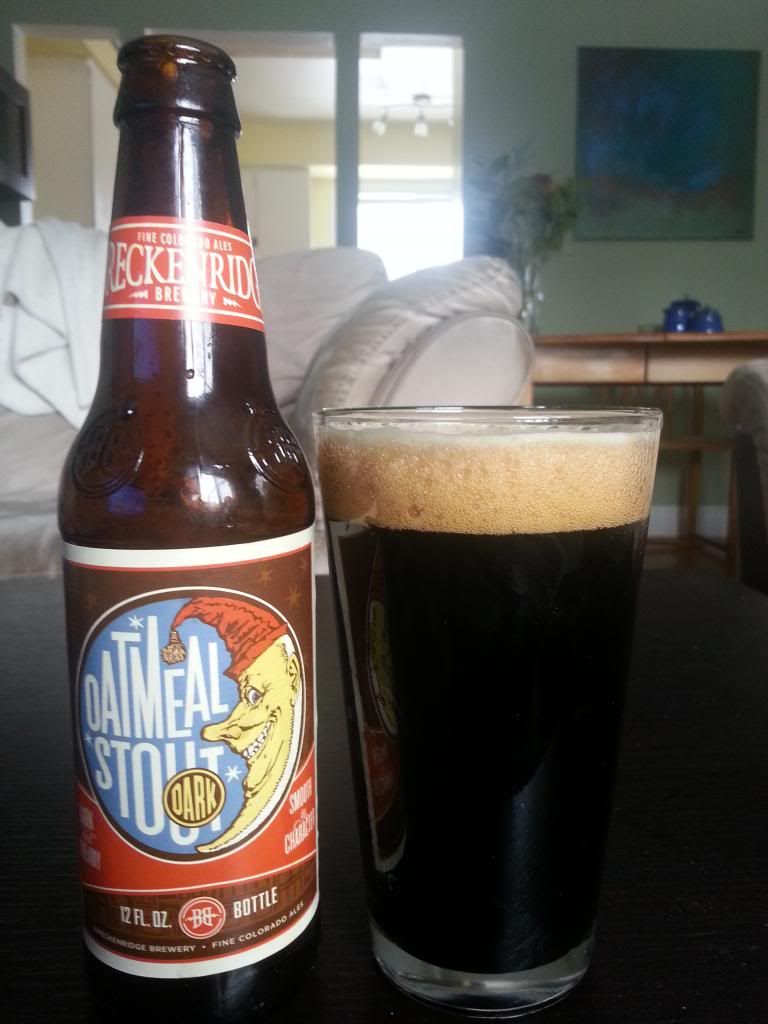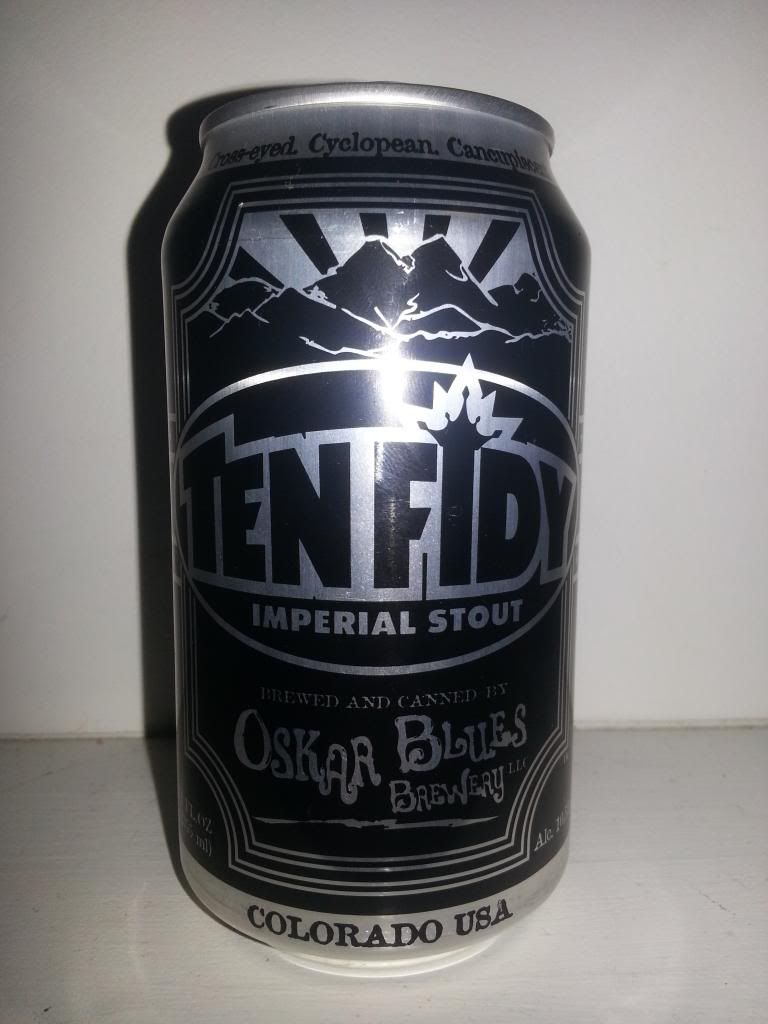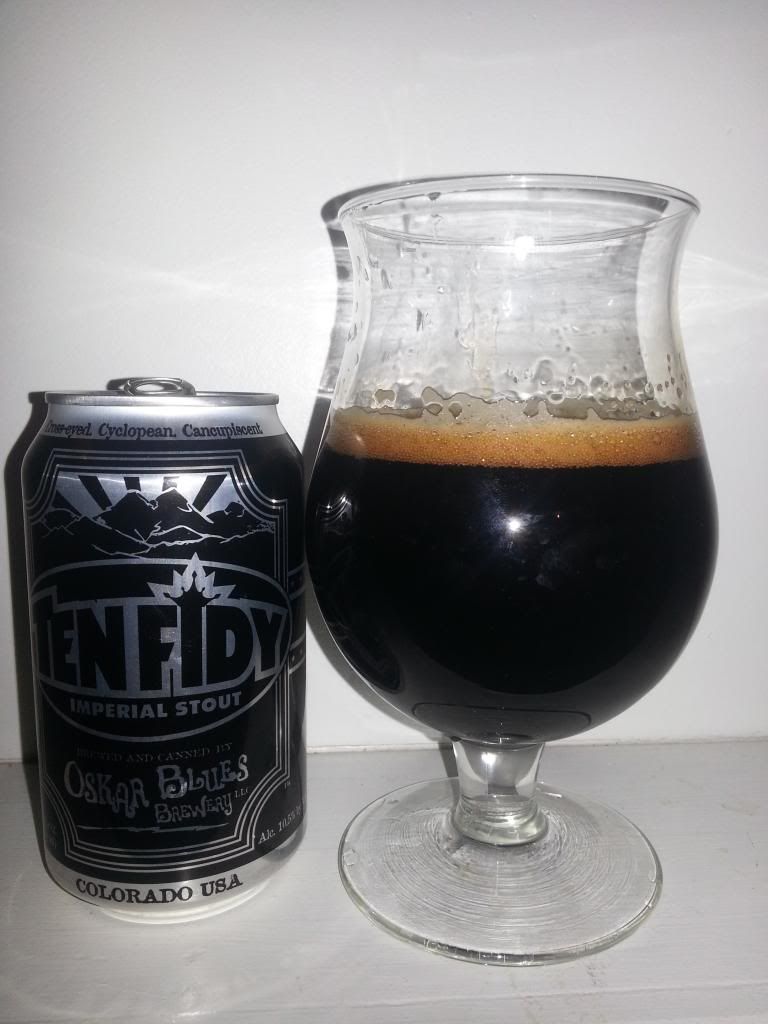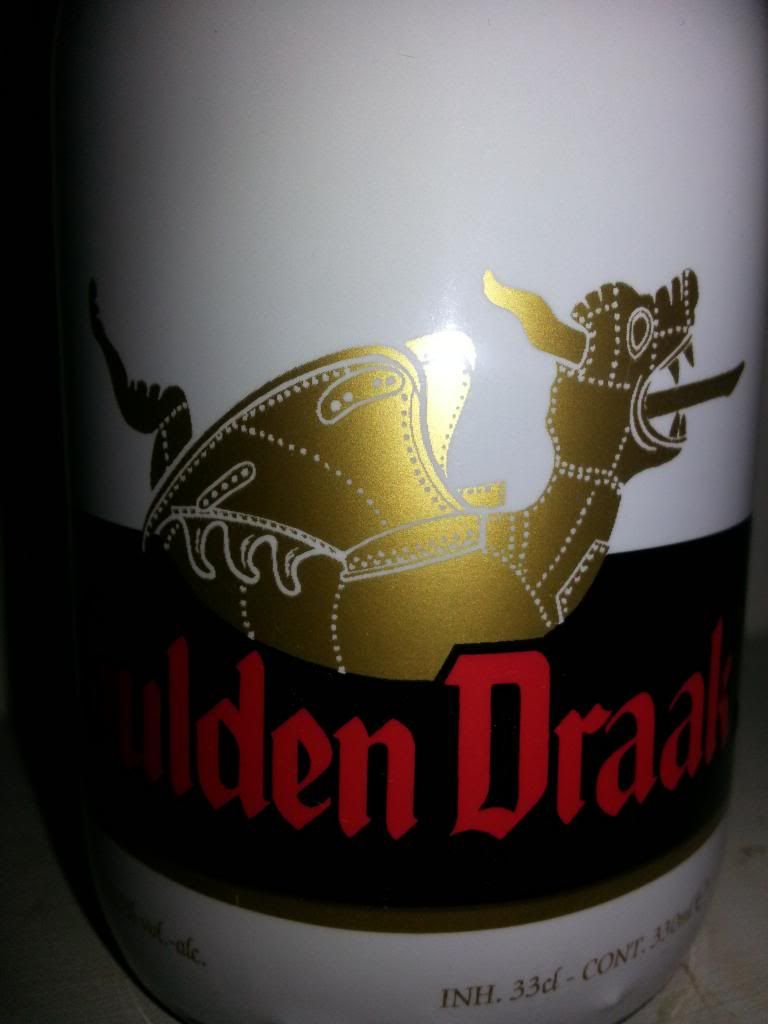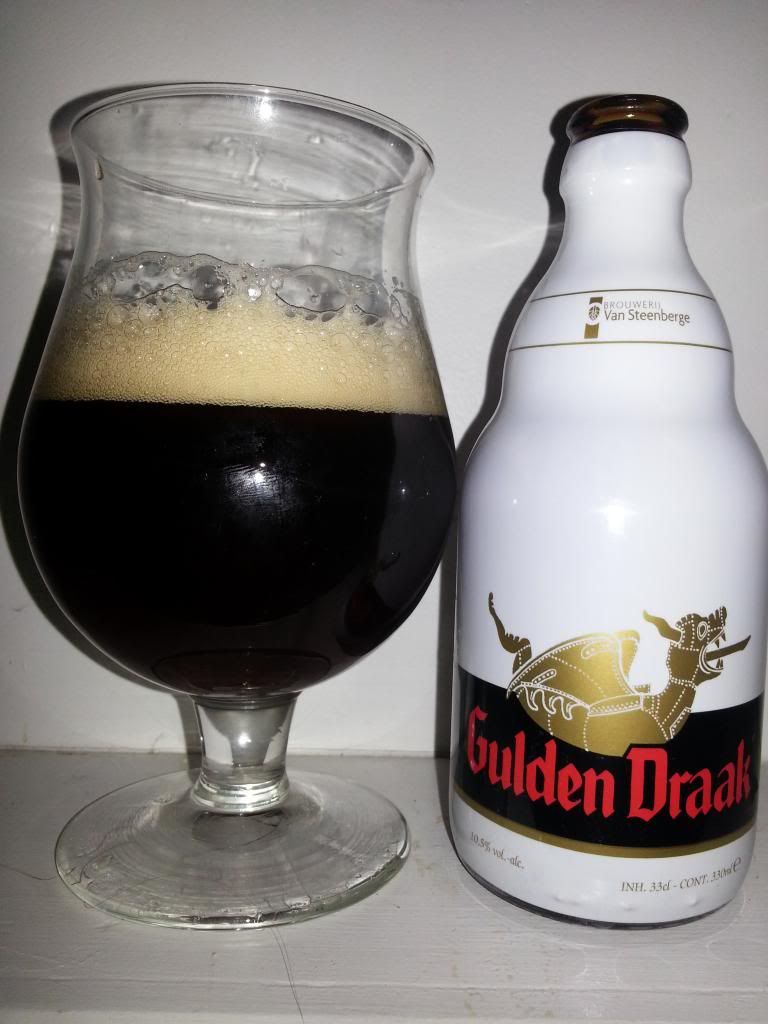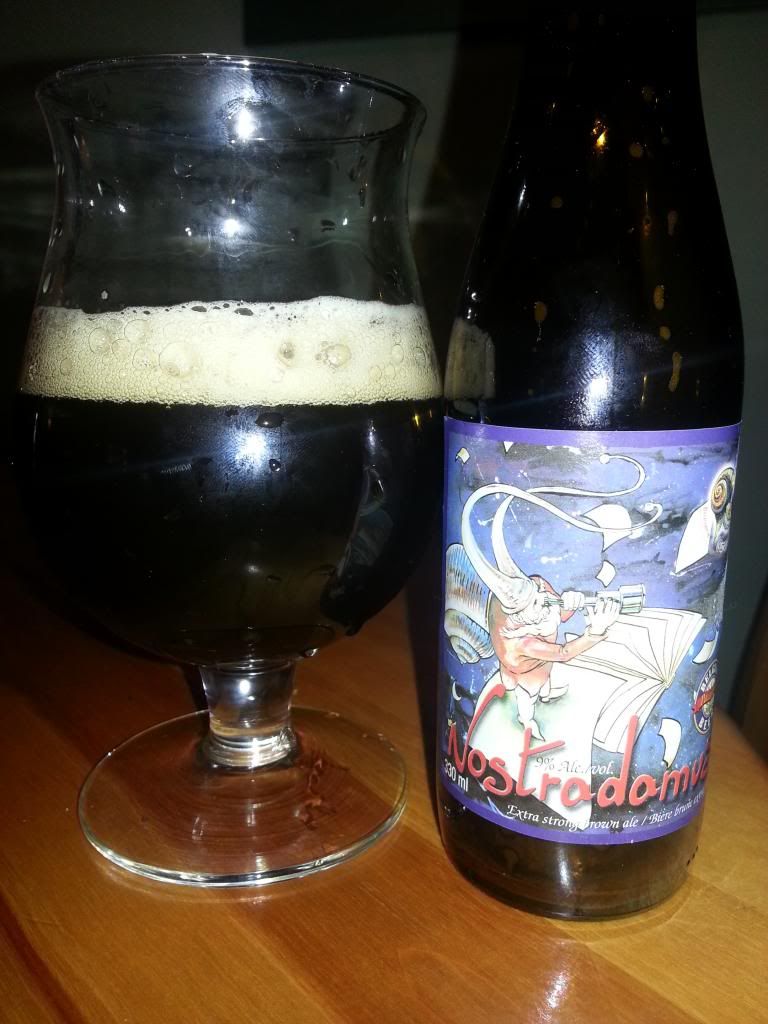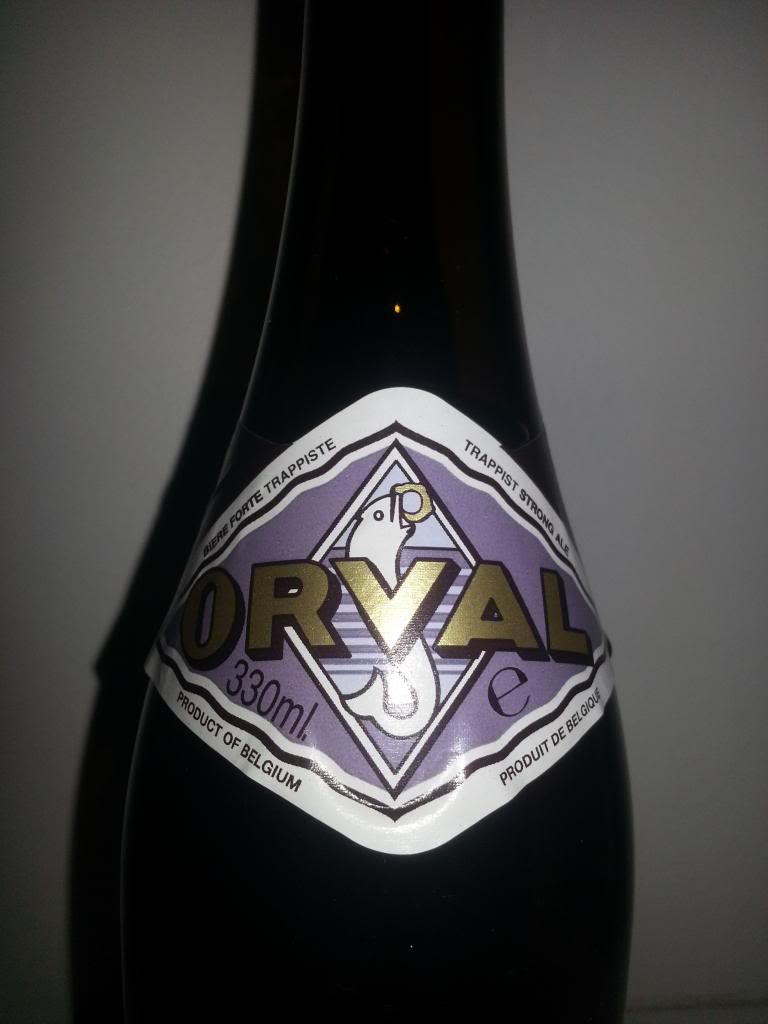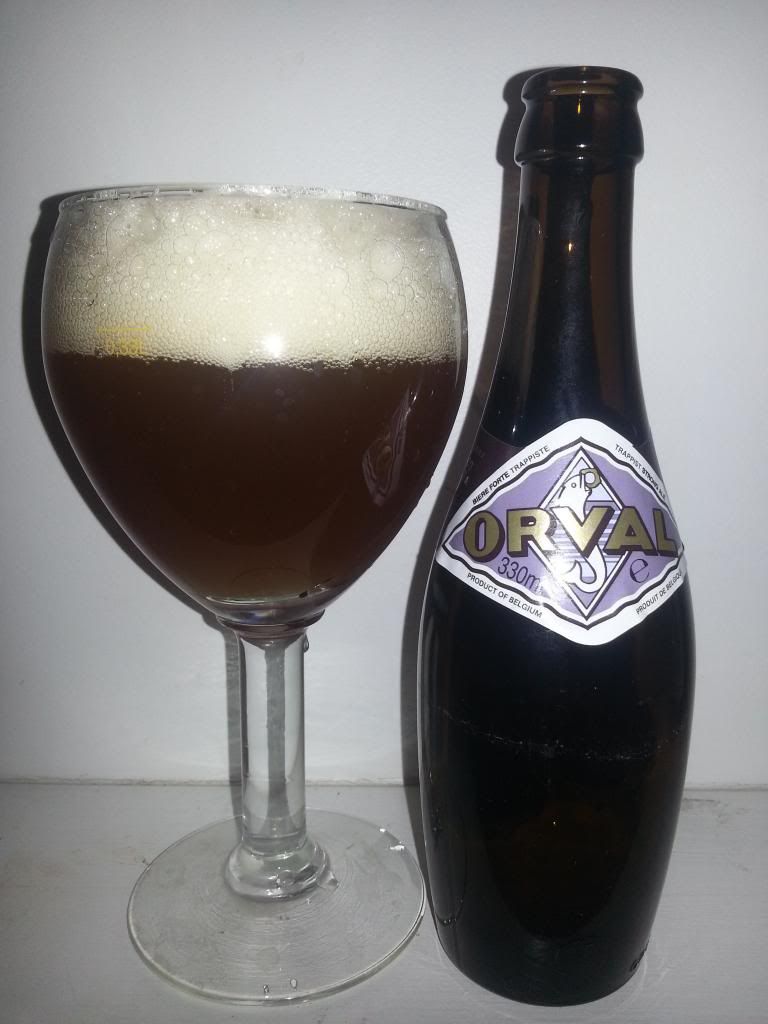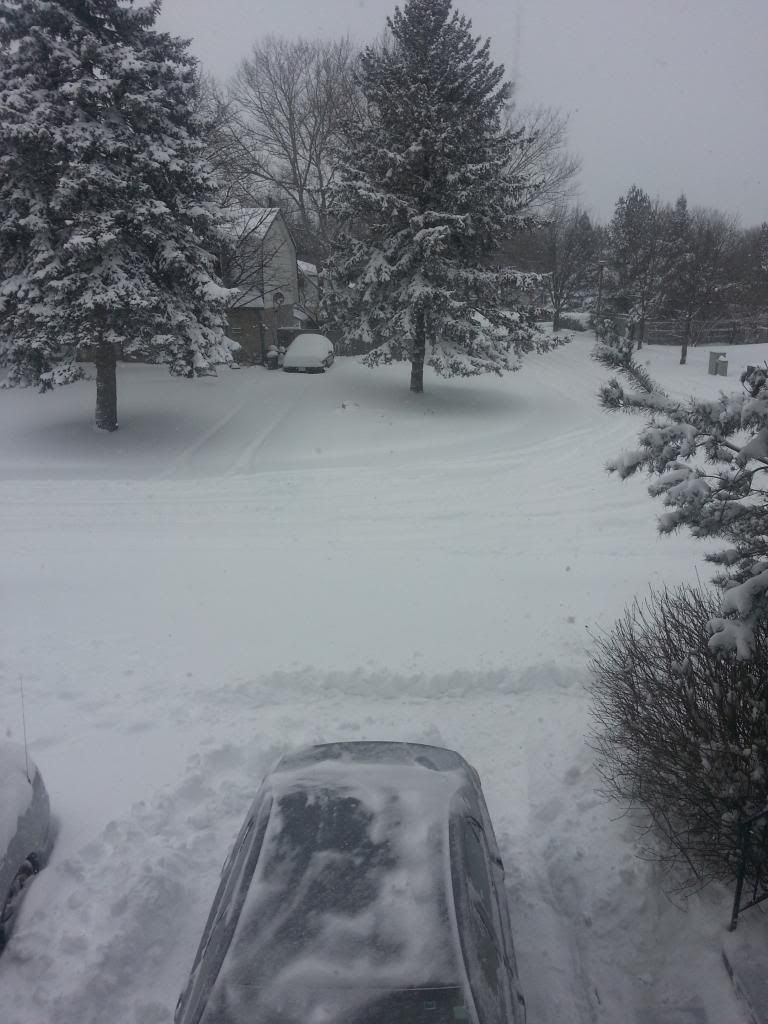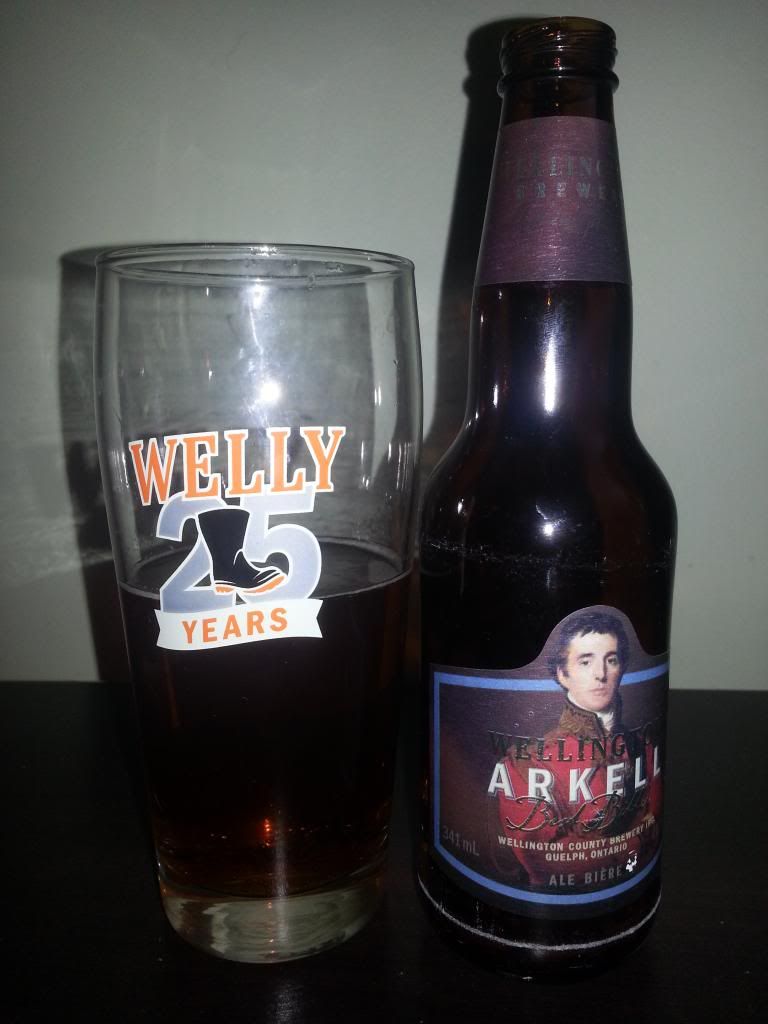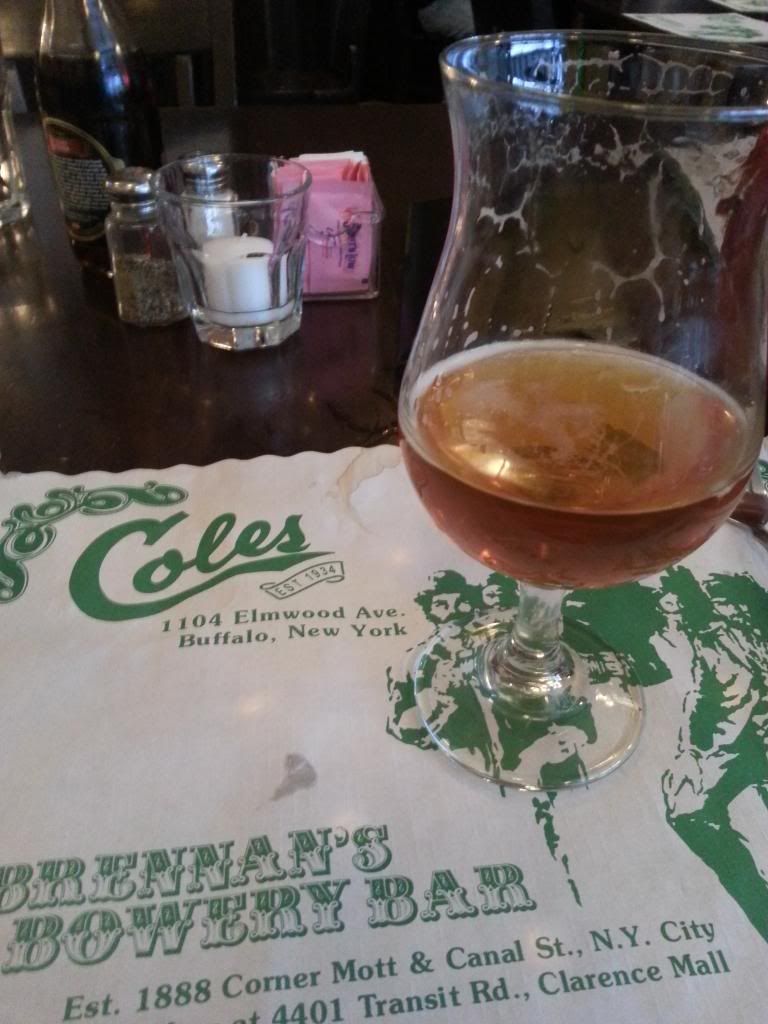 |
| Finishing off the last sips of Dogfish Head's Theobroma. |
With a hefty haul stowed safely in our trunk, we were away back to Canada, but not without a stop at the border in which we had to explain our purchases; since they are craft brews, they are considerably more expensive than your standard case of beer, but it was all good. As a rant-like sidenote: obviously, I understand the need for duties on certain products in order to protect Canadian businesses, and I get that products like beer should be limited - especially considering how unbelievably cheap some beer is in the States - but I really think the limits on alcohol are overly high, especially when compared to other goods. Although in recent months the limits on other purchased goods, like clothes and souvenirs, has been bumped up tremendously, alcoholic beverages remain at their low limit levels. Wine in particular is held at what I think are pretty unreasonable limits, whereby even an extended stay doesn't exempt you from more than a couple of bottles (1.5L, so about two bottles, whether you stay for two days or two weeks). Beer remains at around a case per person per vehicle, which is still pretty low. I appreciate the need to protect Ontario's breweries/wineries, and I definitely do my fair share to support them when I can, but it still seems excessive. No matter: for day trippers like me, however, the limits are held at zero for most products, so if the customs officer wants me to pay duty, it will be on all of it. To ensure a shift and positive experience, always be honest about what you purchase and keep your receipts handy. The worst that could happen is that you have to pay some extra duties and taxes. I always go across the border fully expecting to pay duty - or, as I like to call it, "Good Beer Tax" - though I have been fortunate to not get instructed to do so thus far, which I appreciate.
With my new goodies safely at home, it's time to crack some open. As part of the leadup to last weekend's Super Bowl, I decided to try a little something different this year. In honour of this year's teams - the Baltimore Ravens and the San Francisco 49ers - I decided to have a little beer-off featuring brews from each competing city. So in my wanderings in Premier Gourmet, I made a concerted effort to snap a few of these up. At the end of the day, I settled on a sampling from Heavy Seas (Clipper City) and Flying Dog from Maryland, and a couple from Anchor Brewing in 'Frisco. I could have a look at all of these interesting brews, but the post is getting long enough as it is, so let's focus on a brewery from the winning city - Heavy Seas of Baltimore! And yes, they have a theme:
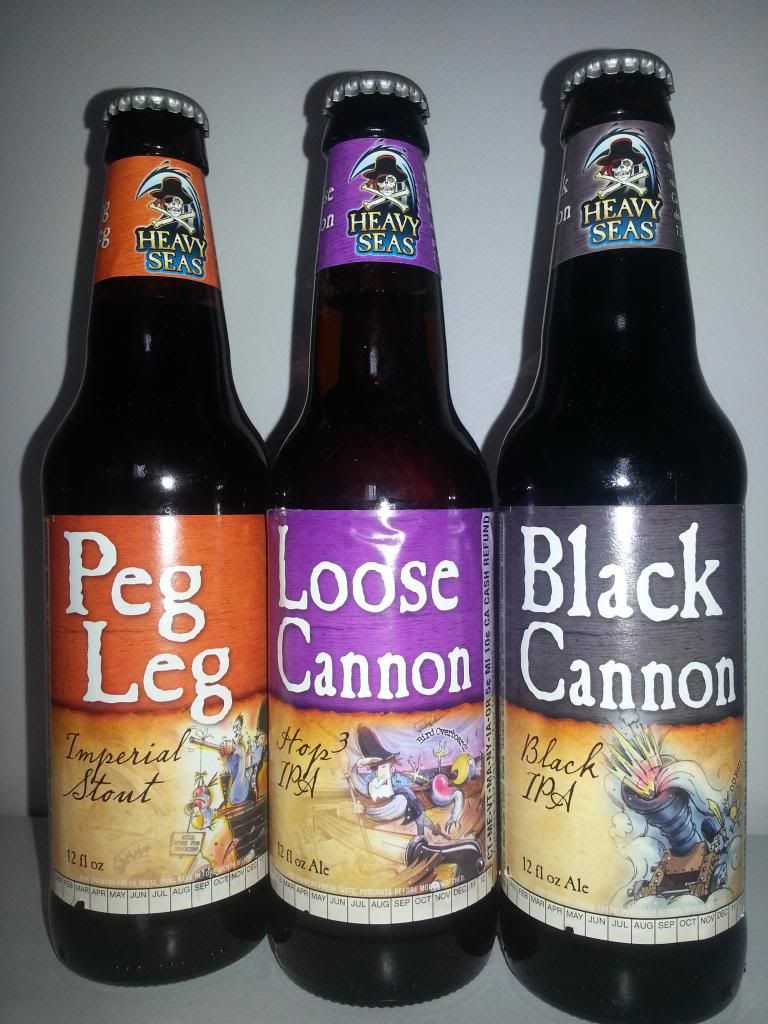 |
| It's common historical knowledge that Blackbeard's piracy can be traced back to a dispute with a barkeep over a spoiled bottle of imperial stout. Look it up. |
Beer: Peg Leg Imperial Stout
Type: Russian Imperial Stout
ABV: 8%
Poured into a nonic glass, which I happened to have handy. Pours a dark chestnut black, with about a half inch of off-white head that settles into a thin ring. The consistency of the pour makes this brew look more like a porter than a thick imperial.
Nose is sweet and chocolatey, which to me smells heavily of milk - almost as if there was lactose involved at some point. Or it could just smell like milk chocolate. A bit of coffee, roasted malts, cream and sugar here.
A sweet stout, lacking in much depth or robustness, though certainly tasty and easily drinkable. Sweet milk chocolate remains dominant, which transitions to a mild bitter coffee finish. It feels and drinks a great deal like a porter, rather than an imperial stout, which is a bit of a shame. Call this brew a porter and I'm right on board with it, but with an imperial stout I'm expecting a great deal more umph. Still, quite drinkable and the alcohol is well masked. (Grade: B)
Beer: Loose Cannon Hop3 IPA
Type: American IPA
ABV: 7.5%
Why "Hop3" you ask? Well, apparently, this brew is hopped at three different occasions during the brewing process: in the kettle during the boil, during what is known as the "hop back" (before the recently boiled wort is sent into the fermenter, it must first cool down so as to not kill the yeast - some breweries choose to have this done in the hop back, a sealed container that can also contain hops that soak in the wort while it cools), and then again when the beer is fermenting, a process known as "dry hopping," which makes the beer smell more of hops. Also, apparently three pounds of hops are added to each barrel of beer over the course of the brewing. Hence "Hop3", or "Hop Cubed."
Poured this one into my Duvel tulip. Nice honey caramel colour, good half inch of head, which ends up settling into a fairly thick ring with swirls and eddies on the top of the liquid. Some lacing. Looks like a double IPA or barleywine.
Nose is certainly aromatically hoppy. Nice tropical fruit - orange, mango, grapefruit - from the hops, with sweet caramel, a bit of pine as well. Smells great.
Sweet, fruity IPA, easy to drink, not overly hoppy, but the finish has a bit of hop bite to it. What I get more strongly is that sweet tropical fruit hop flavor, which is quite nice. Thicker bodied, mild carbonation. Almost pushing into 2xIPA territory, but still easy to drink.
Solid IPA - this would probably be a winner for folks who aren't always going for the bitter, cone hop taste. The tropical smoothness to the brew was quite nice, and while not as hoppy as I would have expected, I still enjoyed it a great deal. (Grade: B+)
Beer: Black Cannon Black IPA
Style: "Cascadian" Dark Ale, or Black IPA, or India Dark Ale, or American Black Ale...yeah.
ABV: 7.25%
This is one of the most recent additions to the pantheon of Beer Gods - the so-called Black IPA. It is tempting to classify this style as being part of the growing trend which runs as follows:
BEER + AMERICAN WEST COAST HOPS + ????? = PROFIT!
There's a lot of this going on recently, with old established styles getting a swift resiny, citrussy kick in the ass with some big-C hops like Cascade, Citra, Centennial, or Columbus being added to English Pales, Belgian Pales, Weizenbier - you name it. Sometimes it works, and sometimes it doesn't. These Black IPAs are a fairly reasonable application of the American Hop Formula, and it usually works pretty well. People like their hop fixes, but it's nice to play around with whatever the base happens to be. The combination of dry, roasted grain in the malt with tart, citric hops gives the brews an almost sour bitterness, which is quite nice if you want a break from the sweeter pale ale fare. My Ontarians out there will recognize the style in Flying Monkey's Netherworld Cascadian Dark Ale. It may not compare to a generously hopped IPA, but it's a nice change of pace.
This brew pours a dark chestnut black, with a small head that survives for quite a while and leaves behind some nice streaks of lace.
The nose is certainly dry, citric, roasty and potent, hitting on all the major elements of the style it seems. Citrus hops, smoke, brown bread and molasses as well.
Initially, despite all the brew's positives thus far, I wasn't a fan of Black Cannon. It started off less like an IPA and more like an overly-thin, incredibly bitter stout, which wasn't doing it for me at the time. Basically bitter hops and smoky toasted bread. After about five minutes of warming, however, I got a few other goodies that gave the brew a bit more balance, including some chocolate and sweeter malt. Must be the tastebuds acclimatizing to the bitterness, which is unfortunate, because after this point I couldn't get much of the hops again. Strange. Creamy, thin bodied, carbonation is within reasonable levels so it wasn't difficult to get down.
This was probably my least favorite of the three, but it was still an interesting brew. It's such a new style that I haven't really experienced enough of them to get a good beat on what a Black IPA can be, so I'm lacking that frame of reference - without it, I tend to compare it to other styles (porters, classic IPAs, schwartzbier), which isn't exactly a fair thing to do. I'll hold off on a grade rating until I get another chance at it. Still, it's an interesting, complicated brew that is worth trying.
An intriguing mini-lineup from Clipper City - good quality, everyday brews that represent the classic American craft styles with some experimentation of their own!
Keeping our beer haul brewery roundup going, this week we take a look at one of the premier breweries from our neighbour at the end of the 401, Founders Brewing from Grand Rapids, Michigan! Stay tuned!

